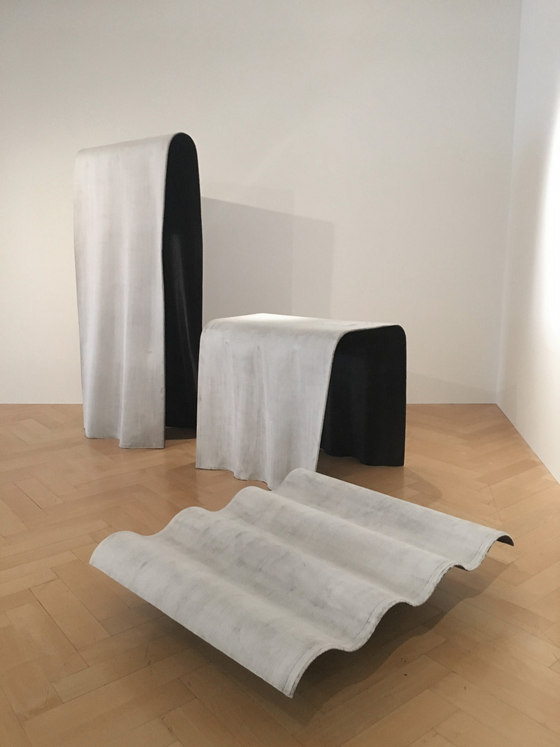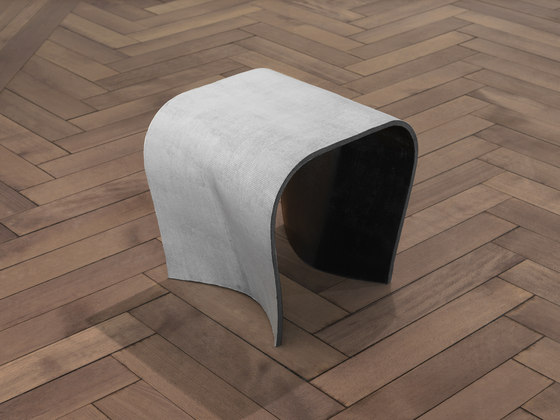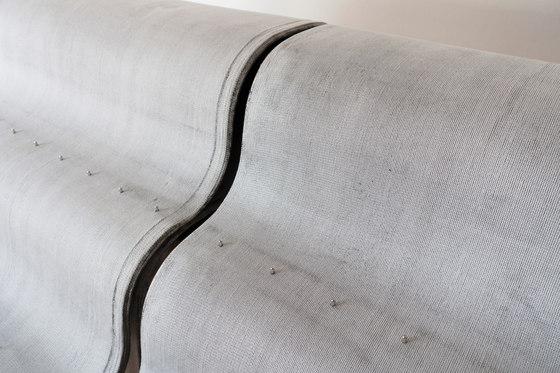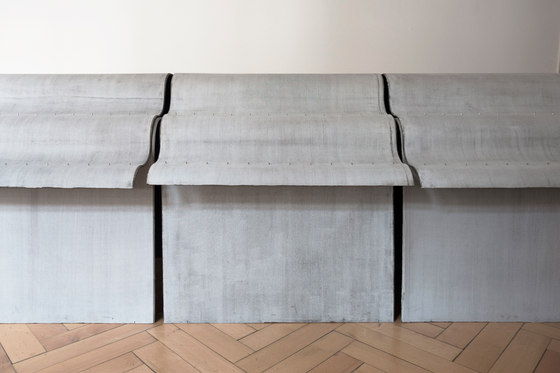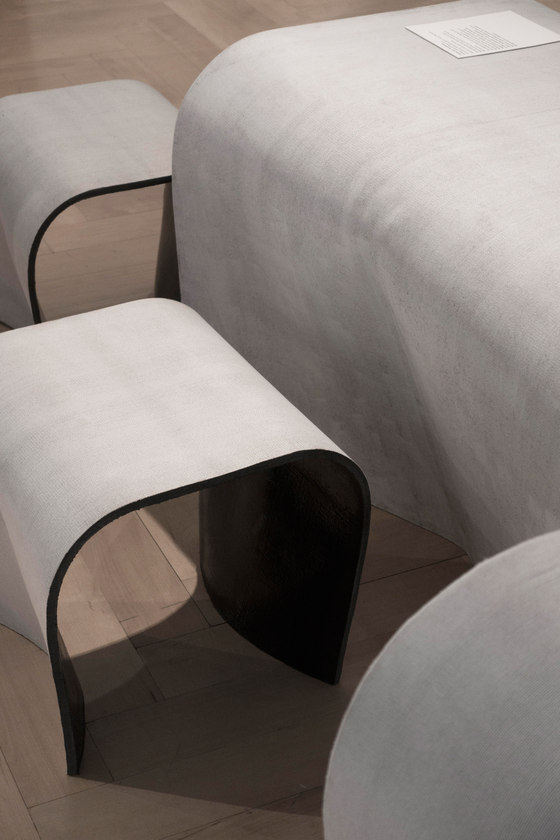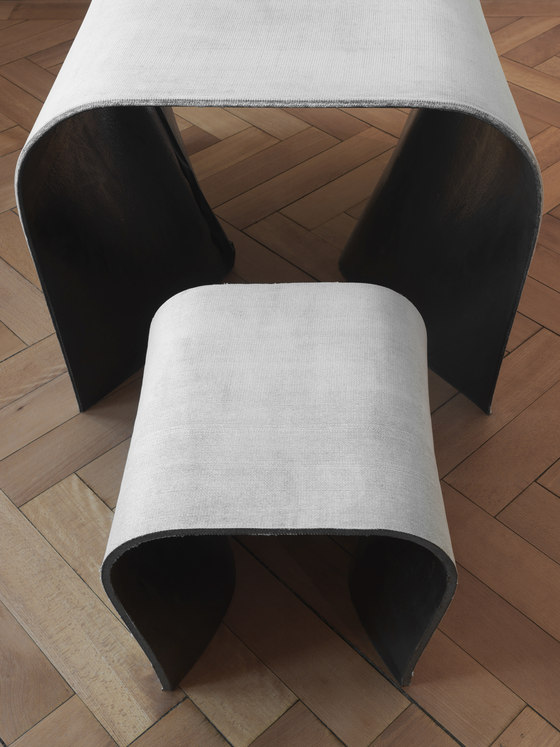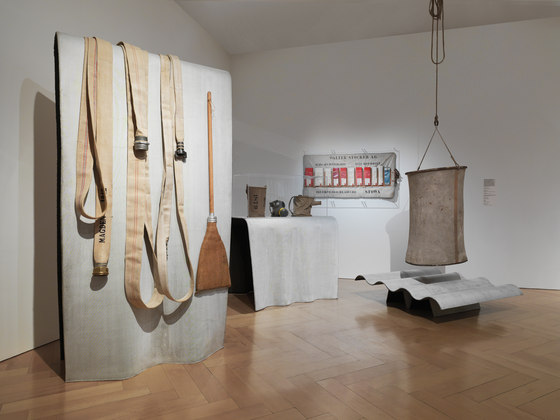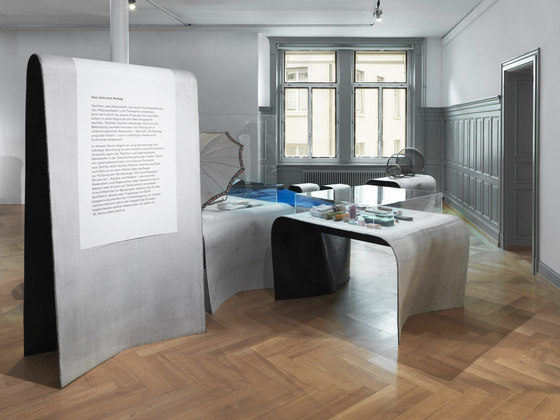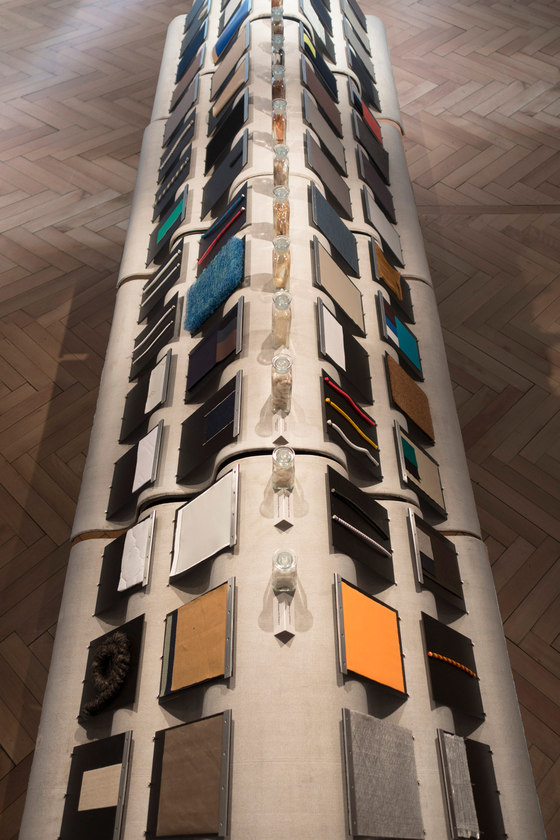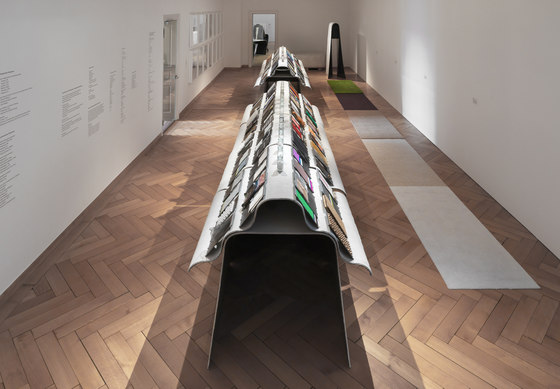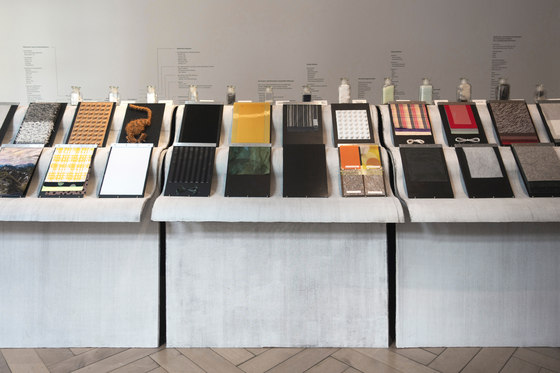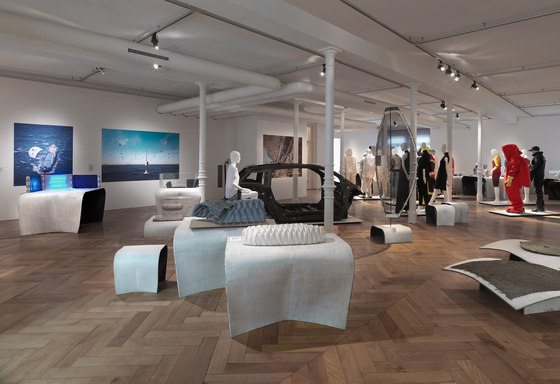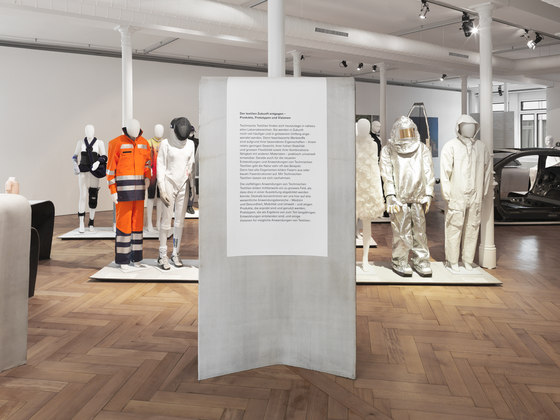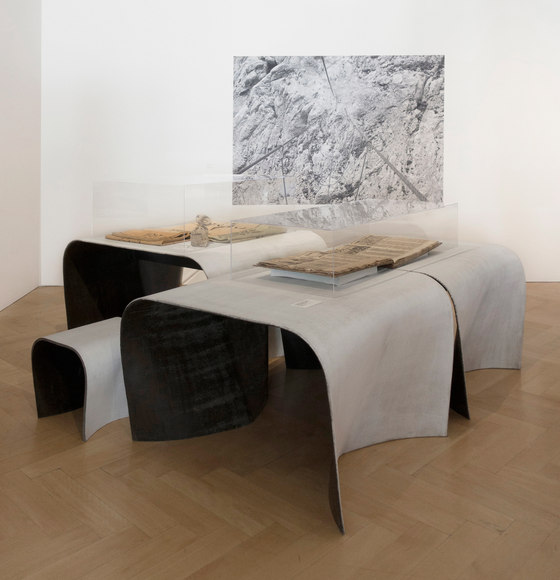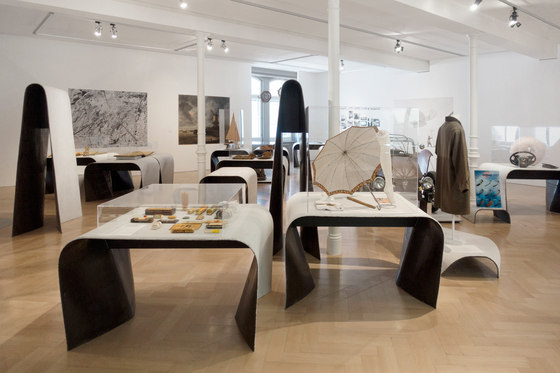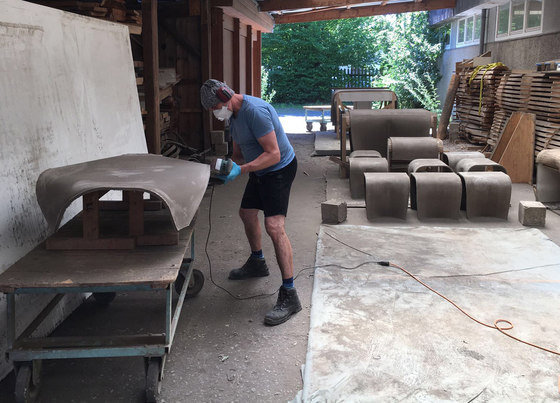‘stiff’ is rigid, light, stable, elegant, curved, grey.
‘stiff’ is made from ultrathin textile concrete.
‘stiff’ is a furniture line, designed by the studio Zeller & Moye.
‘stiff’ elements can be currently seen as the backdrop for the exhibition ‘Neue Stoffe-New Stuff’, a survey on technical textiles at the Textilmuseum St. Gallen in Switzerland. The entire exhibition design is realised from an industrial textile concrete that was transformed into furniture elements.
Through the exhibition architecture, the viewers are given the opportunity to encounter the broad usage of technical textiles. Concrete Canvas, an industrial product originally developed for outdoor applications such as slope protection, water channel lining and instant shelters, is used for the production of furniture, reimagining the material scale and function.
Furniture design
Gently curved forms, only realisable with the thin material, have been developed into furniture elements such as walls, tables, pedestals and seats. The objects are functional and material saving. The soft cotton surface of the hybrid material stands in strong contrast to the thin but hard concrete core providing the necessary stability to the free shapes.
Clustered in small groups, the different furniture types act as components of a manifold furniture landscape, unfolding through the exhibition areas as a consolidating backdrop for the diverse mix of exhibits of varying sizes, shapes and colours. Each furniture element is employed according to the size of the individual exhibit that it displays. Low plinths are used for objects of large format such as car chassis and figurines, table-height pedestals display small-scale items, while tall wall elements serve as information boards or vertical focal points with exhibits draped over them.
The formal language of the ‘stiff’ elements is a direct expression of the progression of force within the material. The forms appear soft and flexible and yet they are rigid, load-bearing structures that appear frozen in a transitionary state. Curved profiles are stabilised by a precisely placed fold in the middle of their surface whereas wave-like forms derive structural integrity from their specific curvature. The appeal of the furniture pieces lives to a great extent in the contrast between gentle curvature and rigid inner concrete core, expressed in a slimness only achievable through the hybrid of concrete and technical spacer fabric.
Manufacturing process
Developed through various scale models, a number of forms were selected for tests at real scale with the thirteen millimetres thick textile concrete in the workshop. Simple boards and trestles served as moulds to generate bent shapes by draping the dry textile concrete mat into position. After the dry mat was watered and the curing process of the concrete was completed the individual forms could be liberated from its supporting structures to be examined as free standing objects. Loading tests showed in some instances surprising results of one hundred kilograms being supported by the material. The intention was to use the textile concrete efficiently in slender forms expressing the inherent thinness of the material. This led to relatively simple furniture shapes that received final stability only by the introduction of minor bending and curvature.
Тheme of the exhibition
The exhibition comprises all kinds of applications of technical textiles from the past until today, but also surveys the innovation potential of new textiles in the future. The show challenges the common understanding of what textiles are as even established techniques and materials occur in completely unusual applications and combinations.
Textiles are widely used in medicine and wellness, in vehicle manufacturing and safety technology, in architecture and energy generation. Starting with a retrospective view on the long history of functional textiles, everything revolves around common as well as obscure fibres and materials, their fabrication and possible uses in our everyday life. The exhibition reveals that our modern world is far more ‘textile’ than originally anticipated.
The range of applications extends from lightweight car chassis and façade cladding to tiny filters in mobile phones. In times of scarce natural resources, textiles and fibre-based products can contribute to saving potentials. Focusing on the sectors particular to daily life, including medicine, mobility, safety and architecture, the exhibition highlights the immense potential for the application of new textiles.
The first part of the show addresses the use of functional textiles throughout history. It demonstrates that the virtues that such textiles provide have been already recognised and utilised over the past centuries. In the second part, the material archive offers an insight into the wide range of textile fibres and techniques. Two hundred samples can be inspected and tested by the visitor. In its third part the show provides specific examples. Many of these objects require a big change in the mindset of the visitor in order to identify them as textiles.
Textilmuseum St. Gallen
Zeller & Moye
Christoph Zeller, Ingrid Moye, Omar G. Muñoz, Florence Bassa
